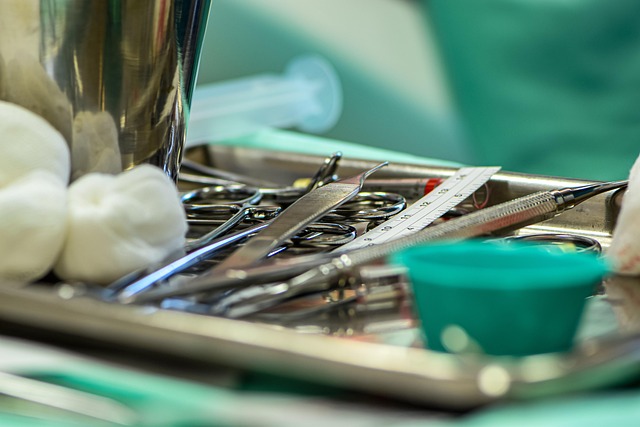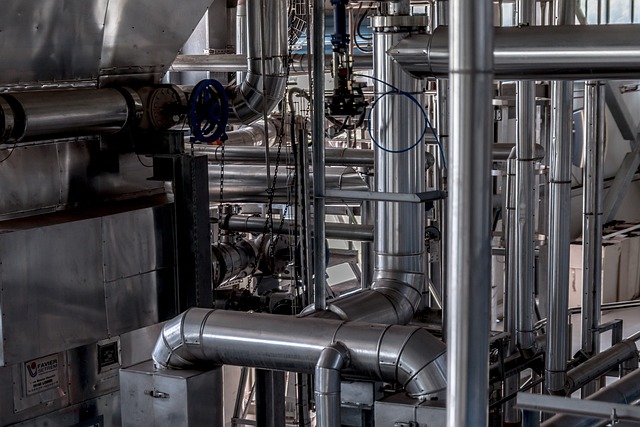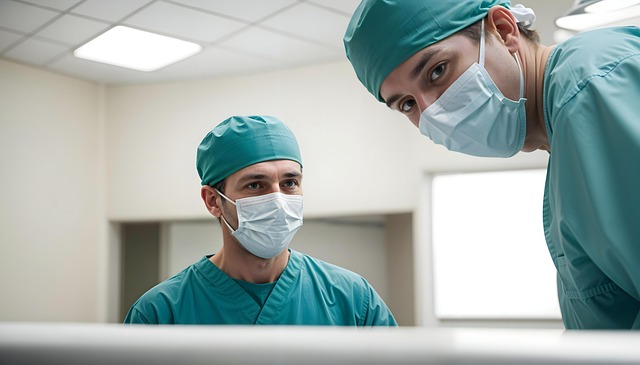Sterilization is paramount for safe surgical skin tag removal, preventing infections and complications. Medical professionals use specialized equipment and protocols to disinfect tools, while DIY methods are risky. High-quality materials like stainless steel ensure tool durability and sterility. Pre-cleansing the skin minimizes bacteria risk. Disinfection techniques, including alcohol and autoclave machines, eliminate microorganisms. Proper tool storage and maintenance extend their lifespan and sterility. Regular cleaning and sterilization between patients upholds hygiene standards and patient safety in surgical skin tag removal techniques.
Looking to safely remove skin tags at home? Understanding proper sterilization is crucial for a successful and hygienic surgical skin tag removal technique. This guide delves into essential best practices, from choosing sterile materials to effective disinfection methods and post-use cleaning rituals. Learn how pre-cleansing skin, regular maintenance checks, and proper tool storage can minimize the risk of infection, ensuring optimal hygiene during your at-home procedure.
- Understanding Sterilization Importance for Safe Removal
- Choosing the Right Materials for Skin Tag Tools
- Pre-Cleansing Skin Before Surgical Technique
- Effective Disinfection Methods for Maximum Protection
- Proper Tool Storage and Post-Use Cleaning Practices
- Regular Maintenance Checks for Optimal Hygiene
Understanding Sterilization Importance for Safe Removal

Understanding Sterilization Importance for Safe Removal
When it comes to surgical skin tag removal techniques like those offered in Bradford, proper sterilization is paramount. Skin tags are common, but removing them safely requires meticulous attention to hygiene to prevent infection and potential complications. This becomes even more crucial for suitable candidates considering whether to opt for professional removal rather than attempting at-home methods.
In light of this, understanding the significance of sterile conditions ensures that the procedure is not just effective but also secure. Medical professionals follow strict protocols using specialized equipment and solutions to disinfect tools, ensuring each patient’s safety during the removal process. This practice aligns with the consensus that can skin tags be removed at home safely? While DIY methods may seem appealing, they carry inherent risks, making professional, sterilized techniques like those employed by Bradford experts the preferred choice for safe and permanent results.
Choosing the Right Materials for Skin Tag Tools

When selecting tools for surgical skin tag removal, choosing the right materials is paramount. Opt for medical-grade stainless steel or high-quality plastic to ensure tool longevity and minimize the risk of infection. These materials are easy to sterilize and resistant to corrosion, making them ideal for consistent use. Avoid using tools crafted from lower-quality materials that may be prone to rusting or cracking, as these can compromise both effectiveness and safety during removal procedures.
Considerations for private skin tag removal services in Plymouth, Gloucester, or Gillingham should encompass material choice alongside proper sterilization techniques. Medical professionals specializing in this private procedure understand the importance of sterile environments, using specialized disinfectants to clean tools thoroughly between each use. This meticulous approach guarantees a safe and sanitary experience for clients, addressing concerns beyond just effectiveness, like potential skin irritation or infections.
Pre-Cleansing Skin Before Surgical Technique

Before attempting any surgical skin tag removal technique, proper pre-cleansing is essential to minimize the risk of infection and ensure optimal results. This step involves thoroughly cleansing the skin around the tags to remove any dirt, oil, or makeup residues that could introduce bacteria. Using a mild cleanser and warm water, gently rub the area to create a clean slate for the procedure. Pat the skin dry with a sterile towel to avoid introducing additional contaminants.
This pre-cleansing step is a crucial part of the latest trends in minimally invasive skin tag surgery, as it prepares the skin for a sterile environment. When comparing surgical vs non-surgical skin tag removal methods, pre-cleansing becomes even more critical as it helps differentiate between best practices for professional working skin tag clinics and do-it-yourself approaches.
Effective Disinfection Methods for Maximum Protection

For maximum protection and to ensure a successful surgical skin tag removal technique, proper disinfection is paramount. Common methods include soaking tools in alcohol-based solutions or using sterile wipes to clean them before and after each procedure at the Bristol Skin Tag Clinic. This process eliminates any potential bacteria or contaminants that could lead to infections, especially considering the cost of surgical skin tag removal per procedure can vary depending on factors like location and clinic. In Bradford or elsewhere, reputable skin tag removal services prioritize these disinfection practices to foster a safe environment for clients.
Additionally, utilizing autoclave machines is another effective way to sterilize equipment. These advanced devices use high-pressure steam to kill all microorganisms, guaranteeing the tools are completely disinfected. This method is particularly crucial when dealing with skin tags as it minimizes the risk of scarring or irritation that could arise from unsterile practices.
Proper Tool Storage and Post-Use Cleaning Practices

Proper tool storage and post-use cleaning practices are essential components of any surgical skin tag removal technique, including those employed by reputable Bristol skin tag clinics. After each use, it’s crucial to thoroughly clean the tools with antimicrobial solutions like isopropyl alcohol or chlorine dioxide to eliminate any residual bacteria or contaminants. This step not only ensures the safety of future procedures but also prevents potential infections and complications.
Storing these tools in a clean, dry, and secure location further enhances their longevity and sterility. Using protective covers or pouches and keeping them away from moisture and direct sunlight can help maintain their integrity. Additionally, regular cleaning and maintenance of the equipment, including sharp blades or scissors used for precise cuts during skin tag surgery, are vital to minimize the risk of adverse reactions. For instance, proper storage and cleaning can mitigate the possibility of transmitting infections, as discussed in relation to what are the potential side effects of skin tag surgery? Moreover, ensuring that tools are sanitized between uses, similar to practices at Bristol skin tag clinics, is a best practice that guarantees each patient receives a sterile procedure.
Regular Maintenance Checks for Optimal Hygiene

Regular maintenance checks are an integral part of ensuring optimal hygiene when using surgical skin tag removal techniques. It’s essential to clean and sterilize tools after each use, following recommended disinfection protocols. This process involves soaking instruments in sterile solutions or autoclave sterilization to kill any bacteria or viruses that may have been transmitted from previous procedures.
For those considering private skin tag removal nottingham or opting for a comprehensive approach as outlined in skin tag removal: a comprehensive overview, understanding the importance of clean tools is paramount. Regular checks and proper disinfection ensure not only the safety of patients but also prevent the potential spread of infections. This simple yet critical step can significantly contribute to positive patient outcomes and maintain the standards expected in any professional medical setting.
When practicing the surgical skin tag removal technique, adhering to strict sterilization best practices is paramount to prevent infection and ensure patient safety. From selecting appropriate materials and pre-cleansing the skin to effective disinfection methods, proper tool storage, and regular maintenance checks, each step contributes to a hygienic environment. Following these guidelines enables professionals to provide comfortable and safe procedures for clients seeking skin tag removal.
